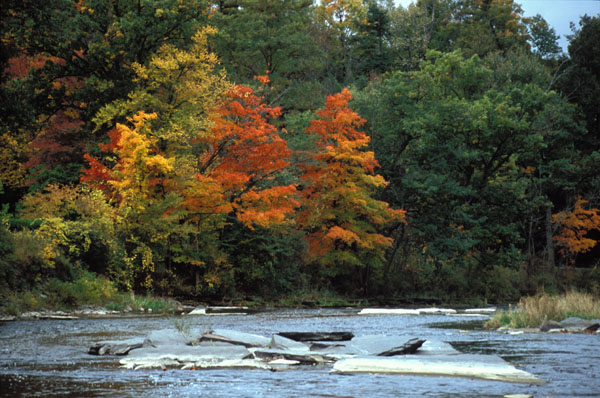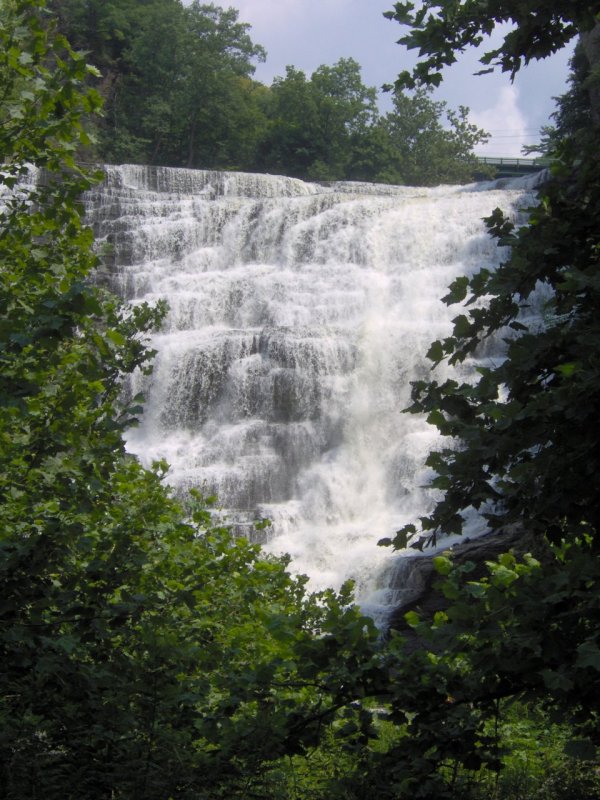Thanks to Jessie LindEPA Factory Farm Pollution Rule Illegal, Says Federal Appeals Court
Rule Violated Clean Water Act, Threatens Public Health, Conservation
Groups Say
NEW YORK -- February 28 -- A 2003 Bush administration farm pollution
rule violates the Clean Water Act by allowing large-scale livestock
farms to apply manure to land without federal or state oversight or
public input, the U.S. Court of Appeals in New York ruled today. The
ruling in Waterkeeper Alliance v. EPA was the result of a lawsuit filed
by three conservations groups, which charged that the rule shielded
factory farms from liability for damage caused by animal waste
pollution.
The groups, Waterkeeper Alliance, Sierra Club, and NRDC (Natural
Resources Defense Council), filed the suit in March 2003. The
Environmental Protection Agency had issued the rule in February 2003
under a 1992 consent decree between the agency and NRDC. It went into
effect in April of that year. (For a copy of the court ruling, contact
Elizabeth Heyd at eheyd@nrdc.org.)
“These regulations were the product of a conspiracy between a lawless
industry and compliant public officials in cahoots to steal the public
trust,” said Robert F. Kennedy Jr., president of the Waterkeeper
Alliance and an NRDC senior attorney. “I’m grateful that the 2nd
Circuit
Court of Appeals has taken the government and the barons of corporate
agriculture to the woodshed for a well earned rebuke.”
Thirty years ago, Congress identified concentrated animal feeding
operations as point sources of water pollution to be regulated under
the
Clean Water Act’s water pollution permitting program. The scale of
animal production at individual operations has dramatically increased
since then, and factory farms today produce 500 million tons of manure
a
year. In December 2000, EPA proposed a new rule with initiatives that
would have protected the environment, but the Bush administration
stripped them from the final rule after agribusinesses objected.
Under the Bush administration rule, animal factories were able to
continue to dump millions of gallons of liquefied manure into open
pits,
called lagoons, and then spray the liquid over fields. Typically the
manure runs off the fields into nearby streams or seeps into
underground
water supplies, polluting water with viruses, bacteria, pesticides,
antibiotics, hormones and excessive nutrients.
The court found that:
· The rule illegally allowed factory farms to write the part of their
permits that limit spraying manure on fields without state or federal
review or approval—and without notifying the public.
• The EPA had failed to require factory farms to use the necessary
technological controls to reduce bacteria and other pathogens from
their
pollution.
• The rule violated the Clean Water Act by exempting factory farms from
meeting water quality standards.
“The court agreed that polluters can’t be trusted to write their own
permits,” said Melanie Shepherdson, an attorney with NRDC’s water
program. “They have to be accountable, especially because they pose
such
a major threat to public health.”
“The court agreed that we can do better than the Bush administration’s
plan,” said Eric Huber, a Sierra Club attorney. “When technology and
existing law can keep animal waste out of our rivers, why should
Americans have to settle for a plan that allows meat companies to
pollute more?”
Waterkeeper Alliance is an international grassroots organization
connecting and empowering 129 local Waterkeeper programs. Each
Waterkeeper program is the voice for their waterway, serving as the
investigator, advocate, scientist, educator and lawyer for their local
waterbody. More information is available at www.waterkeeper.org.
Inspired by their personal connection to nature, the Sierra Club’s more
than 700,000 members work together to protect the planet. The Sierra
Club is the oldest, largest, and most influential grassroots
environmental organization in America. For more information, go to
www.sierraclub.org.
The Natural Resources Defense Council is a national, nonprofit
organization of scientists, lawyers and environmental specialists
dedicated to protecting public health and the environment. Founded in
1970, NRDC has more than 1 million members and e-activists nationwide,
served from offices in New York, Washington, Los Angeles and San
Francisco. More information on NRDC is available at its Web site,
www.nrdc.org.
Permalink 7:24 AM







 These photographs are from an interview with Arni Finnsson, an Icelandic environmentalist, in
These photographs are from an interview with Arni Finnsson, an Icelandic environmentalist, in 


